Description of Wroxeter Roman City
Wroxeter Roman City is a deserted Roman city set within the Shropshire countryside between modern-day Shrewsbury and Telford. The Old Work and the town’s public baths are the only above-ground remains of a lost city whose story is told in the on-site museum.
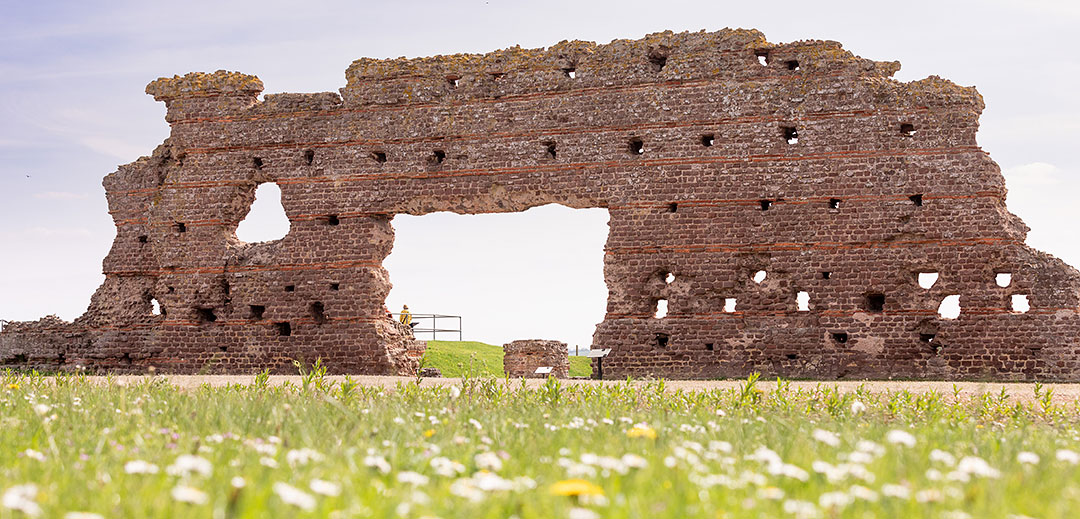
Setting
Unusually for a Roman city in Britain, Wroxeter’s desertion means that its site and surrounding landscape are little changed from when the city was founded. It is still possible to envisage the landscape that the city was set in, with its wide views of distant hills and its location above the river Severn – a view that is best appreciated from the viewing platform on site. From there, the distant glimpses of the city’s defences remind us of the sheer scale of the city – one of the largest in Roman Britain. Appreciation of the city’s expanse can be gained by looking at the field within which the bath ruins are set: this triangular field is one half of the buried Roman fortress which was the foundation of the city. This fortress in turn is only one quarter of the area of the entire city. This field thus represents only one eighth of the whole city. From this same viewpoint we can see how the surrounding hills, from the Wrekin to the east and the Welsh hills to the west, overlook the site.
The Public Baths
The principal ruins visible at Wroxeter are those of its public baths, the only complete public baths complex to be seen in Britain. The ruins today, with the exception of the towering fragment of the Old Work, are still impressive but it is difficult to appreciate just how grand they were. The Old Work stands 21ft (7m) in height but was part of a large building, the baths basilica, with colonnaded aisles and mosaic floors, a building the size and shape of a medieval cathedral. This hall lay at right angles to the baths themselves, a simple and practical design that led bathers through a succession of unheated and heated rooms that were either humid (like a Turkish baths today) or dry (like a sauna).[1] Between the baths and the street lay rooms and buildings that catered more generally for the visitors: hot-food shops, the public latrine, and in the corner of the city block, a compact market hall on two levels. You might also find in this area, or in the baths basilica, a doctor who could advise on cures or treatments for ailments through exercise or bathing.
The forum, temples, and houses
On the opposite side of the modern road lay Wroxeter’s forum. Today, only its colonnade is visible, but it was similar in size to the baths complex. It provided the location for Wroxeter’s market stalls, but in its forum basilica, of the same scale and size as that for the baths complex, there will have been administrative offices, a shrine, and the offices used by the magistrates and council to provide justice and administration for the tribal area. In the courtyard, on market days, will have been the stalls set up for locals to buy the food and other goods they required, but this was also where statues to the Emperors, or to local notables, probably stood.[2] Today, a modern recreation of a Roman town house, based on a house excavated before the First World War, stands on the site of the forum’s courtyard. It offers a glimpse of how Roman shops were integrated into houses, and the construction methods and decoration of a house of modest wealth in the city. Research tells us of around 130 houses like this within the city’s walls. The last major public building, the city’s main temple, was probably where the Victorian farm buildings now stand, close to the museum. Its colonnade was discovered when the farm was built in the 1850s.[3]
Defences
While most of the city is buried under pasture, its defences are visible from the roadside when you approach the centre. The city never seems to have been walled in stone but consists of a wide ditch and bank enclosing an oval 180 acres (78 hectares) in extent.[4] A road on the western side of the city, leading from the village, offers views over the river Severn across its flood plain and, on a clear day, into Wales.
Wroxeter village
The village of Wroxeter lies at the southern end of the Roman city and still within its defences, the Church of St Andrew (now in the care of the Churches Conservation Trust) lies at its core and has masonry from the Roman city built into it. Evidence for the Anglo-Saxon inheritors of the abandoned Roman town can be seen in its walls, and in the remains of a carved stone cross dating from the time of king Offa of Mercia, at the end of the eighth century. The nearby Wroxeter Hotel has fine views of the city defences in this area.[5]
FOOTNOTES
1. White, RH and Barker, PA, Wroxeter: Life and Death of a Roman City (Stroud, 1998; reprinted 2011), 89-91; Newman, J and Pevsner, N, The Buildings of England: Shropshire (2nd edn, London, 2006), 722-726
2. White, RH and Barker, PA, Wroxeter: Life and Death of a Roman City (Stroud, 1998; reprinted 2011), 84-89
3. White, RH, Gaffney, C and Gaffney, VL, with Baker, A, Wroxeter, the Cornovii, and the Urban Process: Final Report on the Wroxeter Hinterland Project 1994–1997, volume 2: Characterizing the City (Oxford, 2013), 92-93
4. Ibid., 179-185
5. Newman, J and Pevsner, N, The Buildings of England: Shropshire (2nd edn, London, 2006), 718-721
Find out more
-
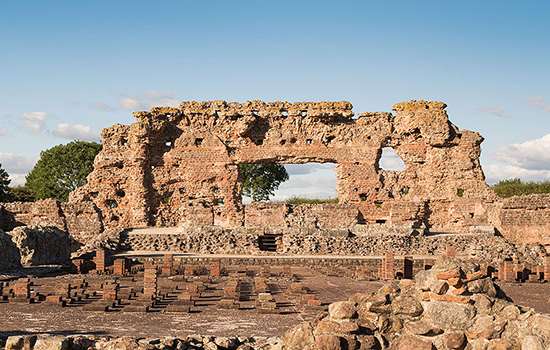
History of Wroxeter Roman City
Founded in the mid 1st century AD, Wroxeter was one of the largest cities in Roman Britain and is exceptionally well preserved.
-
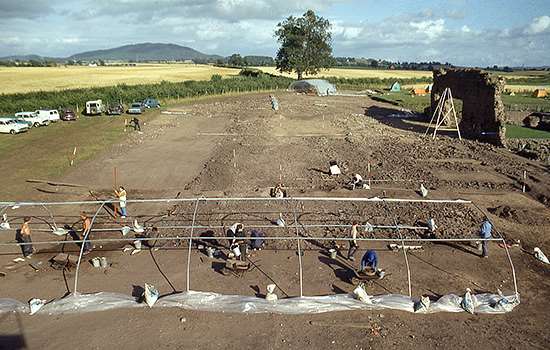
Research on Wroxeter Roman City
Wroxeter’s importance as a major Roman city in Britain underlines the importance of continuing to research its past.
-
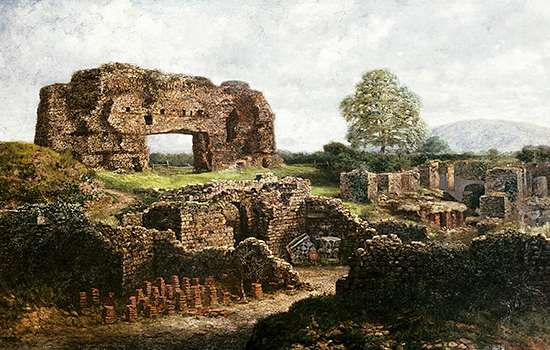
Significance of Wroxeter Roman City
Wroxeter is probably the best-preserved Roman city in Britain, as well as one of the largest, although only a fraction of it can be seen today.
-

Collection at Wroxeter Roman City
Tens of thousands of objects provide evidence about the lives and beliefs of Wroxeter’s civilian inhabitants from the 2nd to 4th centuries AD.
-
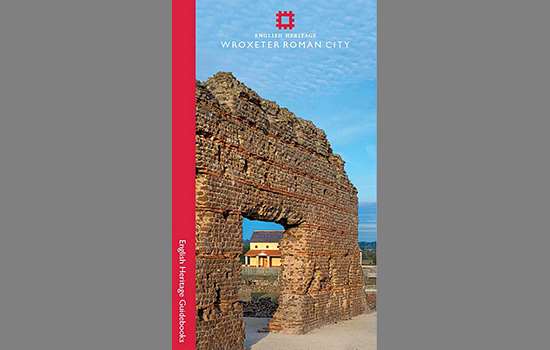
Buy the guidebook
The guidebook provides a full tour of Wroxeter Roman City and explains the complex history of its rise and decline.
-
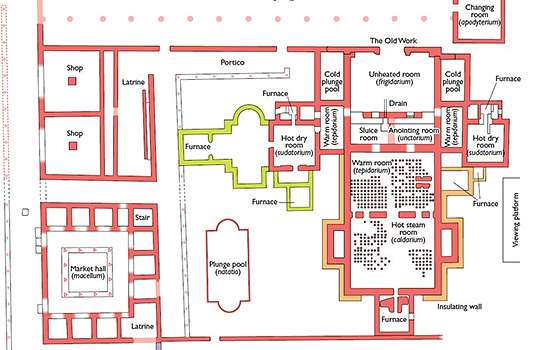
Download a plan
Download this pdf plan of the baths complex at Wroxeter to see how the buildings developed over time.
